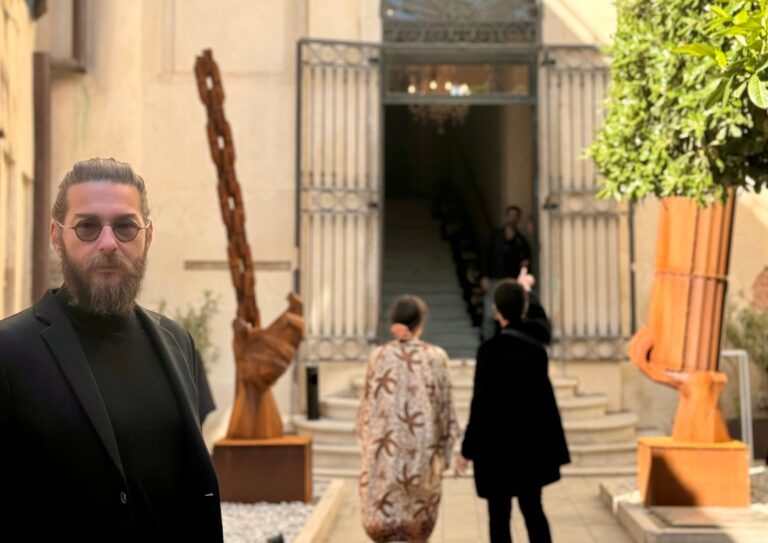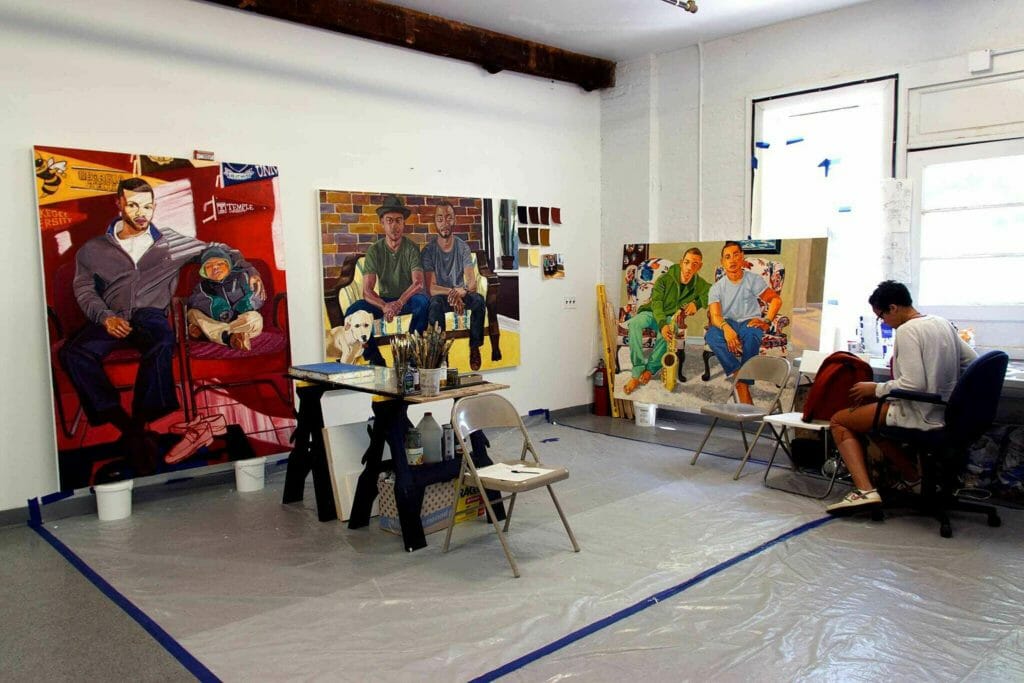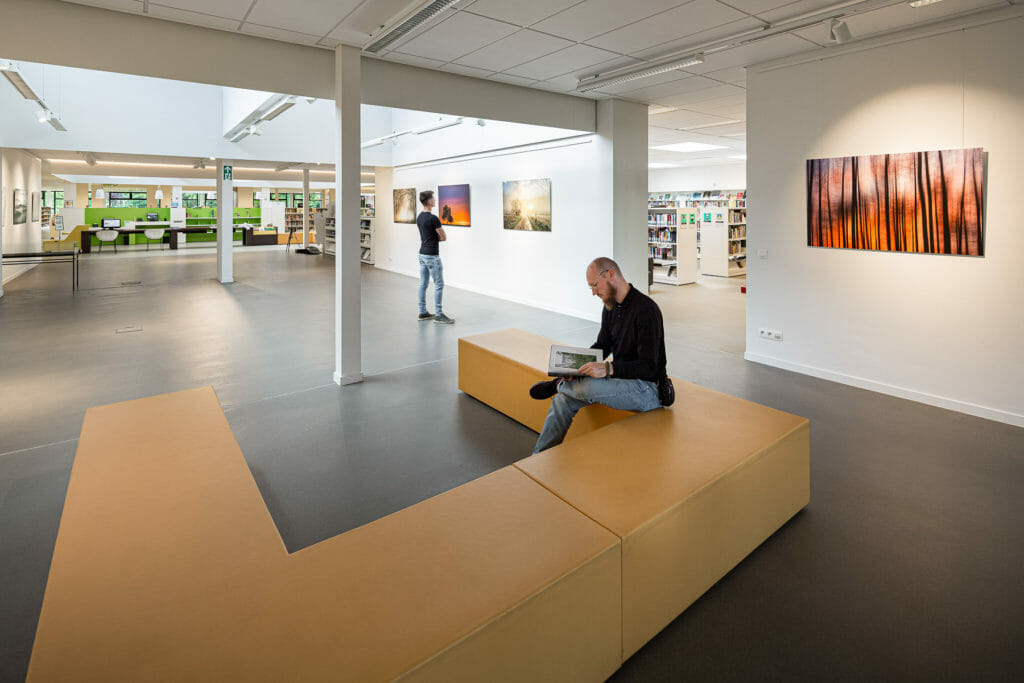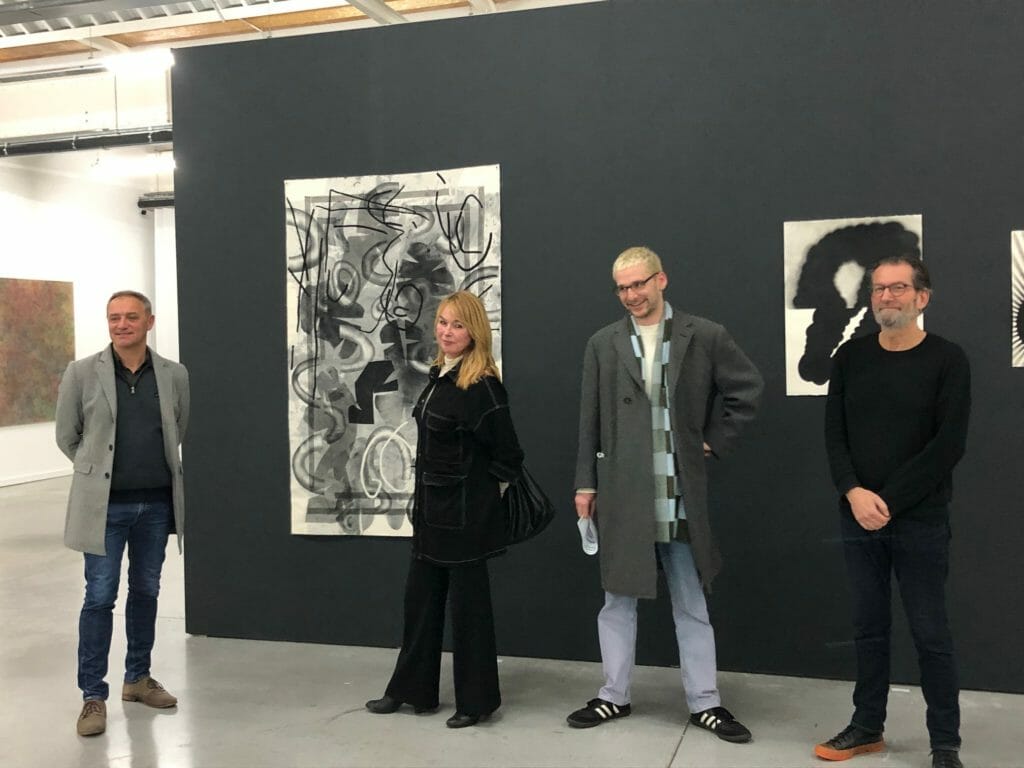
Nikola Vudrag at “Personal Structures — Beyond Boundaries”
Palazzo Mora, Venice, IT
No experience? No Problem. That’s right! When it comes to artist resumes for beginning, hobby, or emerging artists, the main problem and question we encounter over and over again is artists that have next to nothing to add to their resumes because they don’t have any exhibiting experience yet. In this article, we will discuss ten strategies anyone can apply to their artist resume and career to improve your artist resume today and how to make your success happen in the art world.
An artist’s resume lists all relevant and factual information about who you are as an artist and what you have achieved so far. So what if you don’t have any exhibitions yet or do not have any formal art education? Having a blank resume is not a pretty sight and does not communicate success, so most artists intuitively opt not to have an artist’s resume at all.
However, unintentionally, this is a very common career mistake that can hold you back from making things happen in the art world. Not having an artist resume will communicate you are not approaching your art career professionally. Whereas having an artist resume, no matter how limited, that is set up correctly following the archetypical structure for professional artist resumes is a pretext for art world success.
So how do we set up our artist resume with no experience? All artists have to start somewhere, and it is essential for galleries or collectors that gathered an interest in you to know where you are at this moment, no matter how little experience you have at this moment. But, of course, we can not have an actual blank resume on our website and in our application forms when applying to open calls. Nor will we sit there and wait for something to happen all out of the blue—because it won’t.
Instead, we are going to make things happen ourselves. We will share some specific advice on how you can pro-actively improve your artist resume—starting today—discussing various ways, strategies, and art politics, anyone can do, and that will fill that blank resume so your chances, credibility, and profile as an artist will be optimal for success.
Throughout this article, we will use the information and the archetypical structure for artist resumes as discussed in our article How To Write an Artist’s Resume (Examples + Template) and use the CAI Artist Resume Template, which can be purchased for just €2,50—or you can recreate the template by following the free article in question.
Before we dive into some advanced art politics and strategies, let’s warm up with an easy thing to add to your artist resume: your basic information, education, and contact details. Your basic information should follow this structure:
When it comes to your education, if you have no relevant education or training, simply leave this part out of your resume. Do not write that you are self-taught or share education that has nothing to do with art. If your degree is remotely related to arts, such as graphic design, architecture, or art history, you could add this to your resume. You could also include—or opt to follow—courses, apprenticeships, or workshops to improve your resume here. Once again, if you don’t have this, do not worry; leave this segment out of your resume entirely. If you do, write it down following this structure:
Instead of excluding the dealer directory segment, you can replace it with your contact information to fill up your resume. This is the very last segment on your resume, and you could write it down using this structure, taking up some extra space:
The exhibition history is arguably the most crucial segment of any artist’s resume. Leaving this completely blank is something we should avoid at all times. But what if we do not have any exhibitions yet and galleries are not inviting us? Let’s take things into our own hands and make some exhibitions happen that can be added to our artist resume.
The first strategy consists of organizing a yearly open studio day. Open your studio for the public, have some drinks and food with friends and family while discussing your art, share the event with your Instagram followers, or invite fellow artists. An open studio day is a very informal and easy-going way of exhibiting your art. It is also a great way to gather some experience, test different ways to present your art, take some pictures of your art as exhibition views, and learn how to talk about your art for the first time.
If you do not have an art studio, you could present some works in your living room. And even if there aren’t many people visiting, you will have had your first exhibition and a new item to add to your resume. I would advise you to do this every year for as long as you aren’t receiving any genuine invitations.
Further, you could refer to them in your artist resume using an abbreviation such as O.S.D as an exhibition title instead of writing down Open Studio Day in full, which is a bit more unprofessional. Doing so means you aren’t lying about anything, and it looks like you had a normal show. And at first, you could also add the upcoming edition to your resume to have a bit more on your resume already. Make sure to follow the archetypical structure to write down exhibitions. By doing so, it should look like this:

Another great way to gather some exhibiting experience and add an ehxibition to your resume is organizing and hosting your own exhibitions. You can rent an exhibition space—possibly together with some fellow artists to split costs—and showcase your work for the first time in an actual exhibition.
This is once again an excellent opportunity to gather some experience, add a show to your resume, take some professional-looking exhibition views for your artist’s website and social media, and potentially make some first sales happen. In fact, instead of considering exhibiting with some vanity art galleries that charge you tremendous amounts of money, we are convinced hosting your own exhibition is the better option and is more accepted in the art world.
Another possibility is to host your own booth at an art fair or festival. This can be very lucrative, but contains more effort and risk. Plus, with art fairs being very sales-oriented, it is less accepted by the art world because you put yourself in a role conflict between the artist and the salesman or saleswoman. Feel free to discover more about art fairs by reading our chapter about self-hosting booths at art fairs in our article 20 Ways How To Make Money as an Artist next.
Further, with these personal exhibitions, you can allow yourself to make some mistakes and learn from them. Think of hanging too much art on the same wall, hanging your paintings on cords, adding info cards next to your paintings, being too pushy to talk about your work or to generate sales, and so on. These are all very common and natural mistakes that almost all artists initially seem to make. One could argue this is a phase all artists seem to go through, and better to go through it at your own show. By doing so, these mistakes won’t affect your career compared to when you are having a serious show at an actual professional art gallery.
Try to do this yearly, or even several times per year, depending on the time and funds you have available. Once again, we must write the exhibition down using the archetypical structure. Give your show a title so it should look like this:
Pro-actively looking for local exhibition opportunities is a first step towards exhibiting in collaboration with other entities. The most common approach here is by taking up contact with local businesses such as pubs, coffee houses, restaurants, hotels, bookshops, and more. However, this can be very time consuming and often an unfruitful venture. Further, it is very commercially oriented because in these settings your art is presented as decoration, and it’s not purely about the art or the ideal way to experience your art.
Therefore, I would advise you to focus on public places and institutions—most often government related—that are natural allies for art and the accessible experience of art. Think of libraries, city halls, cultural centers, local theaters, and more. Most often, their mission is to support art and culture in general, especially for local artists. Try to link up with your local library or town hall and offer your efforts for a lovely exhibition in their building. It will cost them nothing, it will cost you next to nothing, it gives an extra dimension to their facility and the city, and it gives you an exhibition opportunity. Win-win; a perfect example of a synergetic collaboration.
Try to do this frequently, but never come across as too pushy. Once again, we follow the archetypical structure for the exhibition history. So if you would host a show at your local library titled, for instance, A Visual Story, the record should look like this:

Another way to work on your exhibition history is by applying to open calls for exhibitions. Numerous galleries, art spaces, foundations, and museums have open calls for specific exhibition projects. As a result, instead of waiting for one of those actors in the art world to invite us out of the blue, we can actively search and apply for these opportunities. Your first gallery exhibition or museum exhibition is a significant leap forward and elevates your credibility as an artist.
The best way to find these art opportunities—or to stay posted about them—is by using databases such as Artenda.net. Here you can navigate to Exhibition Calls and find open calls suited to your level, location, and practice. I would advise you to keep track of these opportunities throughout the year and to apply to the best ones. Suppose your art has reached a decent level, and your artist website and artist resume haven been set up correctly. In that case, it is very plausible to have at least one exhibition per year using this strategy when applying consistently and persistently.
With these open calls, you should write them down following the archetypical structure for exhibitions.
Now that we have discussed four different ways how you can make your own success in terms of working on your exhibition history, there is another trick to make it look better on your artist resume. Instead of categorizing them as group shows, solo shows, art fairs, and so on, we will compile all exhibitions in one segment, specifying the type of exhibition after the exhibition title.
As a result, instead of a fragmented presentation of a couple of shows, you will obtain a decent list and recital of shows. Further, instead of naming our chapters “solo exhibitions,” “group exhibitions,” or “art fairs,” we call this one segment as “Selected exhibitions,” implying the possibility of interpreting this list as just a selection of what you have achieved so far.
By doing so and using the examples mentioned above, our blank exhibition history currently looks like this, and if you maintain doing this, year-by-year it will become longer and better:
When discussing exhibition strategies and opportunities, we mentioned the art opportunity database Artenda.net. Here—and in some other databases—we encounter several different art opportunities we can actively apply for that are great assets for our artist resume; think of art residencies, artist grants, and art competitions.
Being selected for once these art opportunities is also a significant leap forward because it is an indicator of success, a validation of the art world, or an industry-approved recognition, increasing the value of your work and making your profile as an artist more appealing to galleries and collectors. Further, at the end of these art opportunities, chances are there will be an additional exhibition to showcase the work produced during the artist residency, the results of the artist grant, or the finalists and selected artists from an art competition—so in this case you can add two things to your artist resume!
I would also advise you to use the same strategy as with the exhibition history and compile all artist opportunities in a single segment to make your resume look more solid and less fragmented. As with the exhibition open calls, I strongly advise you to keep track of these opportunities throughout the year and to apply to the best ones. With an industry-approved artist website and artist resume, and decent art, of course, it is once again very plausible to have some small yearly successes in this area as well—when applying consistently.
Follow the archetypical structure as mentioned in our article or artist resume template compiling the different segments for art opportunities:

Next, we have the segment of art collections. This is a segment that is most likely left out entirely. However, there are number of things you can do to improve your artist resume and profile as an artist. First and foremost, you can mention you are featured in private collections without specifying them—because they are private, but maybe also because only your parents have some of your work. In this case, you could write a vague statement such as:
A more crafty way to improve this resume segment is by gifting your work to actual collections or entities. Sometimes, instead of holding on to a piece that eventually will never sell, it is better to give it to an entity or collection for your resume, art relations, and overall profile.
However, don’t start writing the MoMA and Centre Pompidou because even if they don’t have to pay anything, they will not accept your work in their collection. Instead, along the way of these strategies to exhibit your work, you can and sometimes should gift a piece as a token of gratitude, an investment in your working relationship, improving your chances of having another show with them in the future, and to have a collection to add to your resume, increasing your credibility and elevating the level of your artist profile.
For instance, during the show at your local library, during the exhibition’s final day, you can communicate in a thank you speech that you would like to gift a work to the library or the city of the library. Even if they don’t have a permanent collection or a storage room for their collection, they can hang the piece in one of the offices or the hallway, and you can add a public institution to your resume in the collections segment. Once again, this is a win-win situation and a productive step towards possibly a long-term collaboration.
You could also use this strategy with one of the art opportunities, gifting your work to a museum or a gallery owner. By doing so, they will be very grateful, and chances are they will invite you back for another show. However, please don’t do this too much, only when it feels right. Do it genuinely—for instance, when you enjoyed working with a gallery so much that you see them as friends.
As a result, our collection segment, in this case, looks like this:
Next, let’s discuss press and publications. As with our previous segments, we don’t have to sit still and wait until something happens. There are numerous platforms and opportunities where you can actively submit or apply to get featured in an online magazine or even a printed publication.
Press coverage, online or in print, is a great asset on your artist resume. Not only is it a validation of your talent and art as a platform or other entity thinks your work is good enough for their publishing activities, but it is also written text you could use for your artist biography or ‘texts’ page on your artist website. By doing so, instead of writing a text about yourself—unnaturally in the third person—you can use their text and refer to them in the text credits increasing your credibility as an artist tremendously.
There are art platforms that have open submission forms, magazines hosting art contests and open calls to get featured in their magazine, and magazines that are open for a paid feature—when being accepted. In this case, when accepting your work, they value your work as good enough, resulting in a validation from the art world and an asset on your resume, where you, as the artist, stand in for their costs to hire a writer and editor to make up their time. No costs and good content for them, limited costs and published recognition for you; win-win!
So if you have the money to spare, you could decide to go for it. Feel free to browse through different online magazines to see what services they offer, or consider submitting to CAI to get featured on our platform. Please note all submissions are carefully curated.
You could also include or create exhibition catalogs when hosting your exhibitions or being included in an exhibition catalog when you have a show at a gallery or after an art contest. As with the exhibitions and artist opportunities, I would advise you to compile press and publications in one segment. By doing so, you could add this to your resume:
Last but not least, you could also try to contribute to the professional art world from a different perspective and in a different role, for instance, as a speaker, curator, guide, mentor, teacher, or volunteer, or employee during an art festival. These contributions could also result in new opportunities as an artist, networking genuinely and organically, and improving your overall profile as an artist.
So at the start of this article, we had an entirely blank resume. Now, let’s have a look at it now:
Worst Case:
Best case:
This proves that you can improve your resume today, or within a very short period of time, and achieve a similar list without having any experience yet—and kickstarting your career, making things happen for yourself instead of of waiting for Godot (courtesy of Samuel Beckett). Read our articles and tutorials on How To Set Up Your Artist Resume and How To Set Up Your Artist Website next, or consider purchasing our artist resume template here.
Last Updated on August 1, 2023

Palazzo Mora, Venice, IT

The Controversial Truth